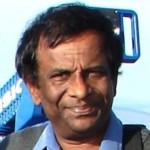A Brief Colonial History Of Ceylon(SriLanka)
Sri Lanka: One Island Two Nations
A Brief Colonial History Of Ceylon(SriLanka)
Sri Lanka: One Island Two Nations
(Full Story)
Search This Blog
Back to 500BC.
==========================
Thiranjala Weerasinghe sj.- One Island Two Nations
?????????????????????????????????????????????????Thursday, November 30, 2017
In Light Of Dr Nalaka Godahewa’s Speech At The UNHRC In Geneva – Part V

More on the Points Dr Godahewa has raised
- No other minority community in Sri Lanka seems to be complaining about discrimination based on ethnicity; there is no discrimination based on ethnicity; It is pure political propaganda (by the Tamil political leadership) with an ulterior motive.
Dr Godahewa’s statement that “no other minority community seems to be
complaining about discrimination based on ethnicity” is a total
misrepresentation of facts. The non-majority communities in Sri Lanka
are many fold. There are Tamils, Muslims and Burghers, then Hindus,
Christians, Malays, Chinese, Kfirs amongst others. Out of these only
Tamils, Malays, Chinese and Kfirs could be considered ethnic based.
Others are not ethnic, but they are faith based. How could anyone be
unaware of the several recent disturbances in the south against
non-majority communities just because they are Christians[1] or Muslims[2]?
Bodu Bala Sena fuelling the flames of conflict against Muslims in
Aluthgama in June 2014 received widespread condemnation and swift action
was urged by the international community to curb the deadly riots.
Intentional disturbances against Tamils[3] and Malaiyaha Tamils[4] have
continued in some estate plantations in the south, even after the end
of the war, for which there is no reasonable justification.
- Tamils holding very high positions in politics, judiciary and academia, in government and private sector are evidence for non-discrimination;
Non-majority community members holding high positions in the public and private sectors is not a barometer by which existence of non-discrimination or equality in a country can be gauged. In the United States, African-Americans have moved a long way from the eras of slavery and Jim Crow laws of racial segregation. Many have held prominent positions of power and wealth. Barack Obama, Michelle Obama, Colin Powell, Condoleezza Rice, Muhammed Ali, Jesse Jackson, Michael Jackson, Patricia Roberts Harris, Oprah Winfrey, Tiger Woods, Neil deGrasse Tyson, Loretta Lynch and Susan Rice are some notable celebrities who have shone in politics, judiciary, academia, music, arts, media and sports. Yet, discrimination and racial violence continue in the US both at personal and institutional level. Despite holding high positions many had made enormous sacrifices and paid with their life due to discrimination or because they chose to stand up against discrimination. Crispus Attucks, Dr. Martin Luther King Jr., Malcolm X, Muhammed Ali and Dr. Maya Angelou, just to mention a few. Most of them had to revolt against the State to defend civil rights and rights of the black people. The 1992 acquittal of white policemen in the case of the savage beating and killing of Rodney King[5] – the 47 year old African-American taxi driver, aptly drives the point.
Many First People of Australia (the aboriginal people) have been prominent members of the society. They have excelled in various disciplines, but the issue of discrimination against the First People has never ceased. Even now, the indigenous leaders are calling for a referendum on establishing a special Indigenous Advisory Council.
In Sri Lanka, as we know, there have been many Tamil cabinet ministers, cabinet secretaries, two opposition leaders, government agents, district secretaries, academics, artists and sports personnel. Tamil political parties have joined hands with many governments forming coalitions. There have been many illustrious Tamils elected or appointed for prominent positions in Sri Lanka’s two main political parties. These individuals have wielded power, on and off, for the last seventy years. Yet this has not shifted the institutionalised cultural prejudice and discrimination that the Tamil community and its members had endured.
If the language policy framework of 1956[6] was designed as an affirmative action to redress grievances of the Sinhala Buddhists because they suffered under colonialism, then the same affirmative action should have been made available to Tamil Hindus who suffered a similar fate under the colonial rule. The Sri Lankan colonial economy was primarily based on the plantation sector and the infrastructure development in the country was designed to cater to this economy. The harsher climate of the north-east drylands could not profitably contribute to this colonial economy underpinned by the plantations, and therefore infrastructure development in the region was very insignificant. Under the circumstances, Tamils had considered education and public service as the only avenues for upward social mobility. Even the pro-colonial, post-independence regime that was in power since 1948 did not carry out much development activities in the north and east. While economically the situation of the Sinhalese down south was very similar, the discriminatory language policy framework compounded the situation of the Tamils.
As mentioned earlier, the Jaffna Peninsula is predominantly a region
affected by arid terrain, water scarcity, low irregular rainfall,
environmental degradation, shallow sandy soil and salinity. Crop
productivity, employment rate and income from farming continued to be
unsatisfactory due to the policy failures in allocating lands for
agricultural growth. In such an environment, receiving good education
was considered to be offering the best chance for a bright future. It
is, therefore, no wonder the Tamil community perceived the government’s
standardisation policies of the 70’s as blatantly discriminatory.
Reaction to this by the young Tamils was to increasingly support Tamil
nationalist politics that culminated in the demand for a separate state.
Such unfair discriminatory policies and large-scale opening of
educational institutions – whose curricula wasn’t helpful for gainful
employment – contributed to the youth uprisings in the south as well as
in the north.
